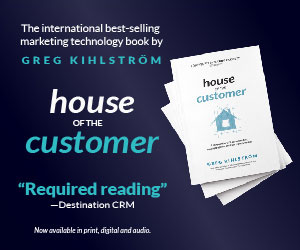This article was based on the interview with Jon Picoult, author of From Impressed to Obsessed by Greg Kihlström for The Agile Brand with Greg Kihlström podcast. Listen to the original episode here:
It is critical to think broadly about all the live print and digital interaction points that customers may encounter when working with a business. This concept is referred to as the end-to-end experience. It involves considering every touchpoint and interaction throughout the customer journey, from the initial point of contact to post-purchase support.
Customer service is often needed because there are problems with the broader customer experience. If organizations fail to address these issues upstream, customers may have to reach out for assistance, indicating a breakdown in the overall experience. This could be due to poor expectation setting, unclear instructions, or confusing billing statements. By thinking broadly about the end-to-end experience, businesses can identify and rectify these issues, reducing the need for customer service and improving the overall customer experience.
The distinction between customer experience and customer service is crucial. Customer service refers to the support and assistance provided to customers when they have questions or issues. On the other hand, customer experience encompasses the entire journey a customer goes through when interacting with a business. It includes factors such as marketing, sales, product quality, ease of use, and post-purchase support. Focusing solely on customer service without considering the broader experience can result in missed opportunities to enhance the overall customer journey.
Despite the growing recognition of the importance of customer experience, building a business case for investing in it can be challenging. Executives and boards of directors may harbor skepticism about the return on investment (ROI) of customer experience initiatives. They may question whether improvements in customer experience can be directly attributed to increased revenues or if other factors are at play.
To convince skeptics of the tangible ROI of customer experience, the speaker suggests drawing parallels with other initiatives that executives have been willing to invest in despite uncertain outcomes. For example, executives often take leaps of faith in big mergers and acquisitions or the hiring of high-profile CEOs, believing that these investments will yield positive returns. Similarly, the speaker argues that customer experience initiatives should be seen as worthwhile investments, even if the ROI is not immediately quantifiable. By creating a compelling narrative and presenting evidence of successful customer experience transformations in other organizations, skeptics can be convinced of the tangible benefits of prioritizing customer experience.
The end-to-end experience is a critical aspect of business success. It involves considering every touchpoint and interaction throughout the customer journey and addressing any issues or opportunities for improvement. While customer service is an important component of the overall experience, it is just one piece of the puzzle. Organizations need to broaden their understanding of customer experience and focus on the universal principles that can enhance the experience for all customers and employees. By doing so, they can create a positive and memorable brand image that cultivates repurchase and referral behavior, leading to long-term success and sustainability.










